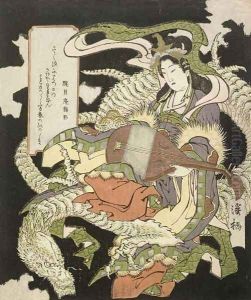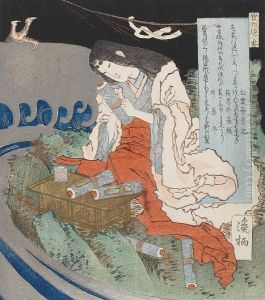Aoigaoka Keisei Paintings
Aoigaoka Keisei was an ukiyo-e artist from Japan, active during the 18th century. Ukiyo-e is a genre of Japanese art which flourished during the Edo period (1603–1868). It typically involves woodblock prints or paintings that depict the 'floating world' – scenes from everyday life, as well as subjects like kabuki actors, sumo wrestlers, courtesans, and landscapes. The term 'ukiyo' refers to the transient world of fleeting beauty and living in the moment, which was a central aspect of the urban culture of Edo (modern Tokyo) during this time.
Unfortunately, there is not a lot of detailed information available about the life of Aoigaoka Keisei. Many ukiyo-e artists, especially those outside the circle of the most famous ones like Hokusai or Hiroshige, did not have their personal lives documented extensively. What is known about Keisei comes primarily from the works he left behind and occasional mentions in contemporary directories and seals found on the prints.
Keisei's style would have been a part of the broader trends in ukiyo-e at the time, potentially influenced by more prominent artists and reflecting the tastes and interests of the merchant class who were the primary consumers of such artworks. His work would have been part of the cultural landscape of the time, contributing to the visual culture that was accessible to the urban population of Edo.
The absence of detailed records on the birth and death of Aoigaoka Keisei is not unusual for artists of this period, particularly those who were not part of the most celebrated circles. Therefore, much of the understanding of Keisei's contributions comes from an analysis of his surviving works, which may include woodblock prints of the 'floating world', such as bijinga (pictures of beautiful women), yakusha-e (pictures of actors), or other popular themes of the day.
Since specific details of Aoigaoka Keisei's life are scarce and his date of death remains unknown, his legacy resides in the art that he has left behind, through which art historians and enthusiasts can gain insight into the Edo period's rich visual and cultural history.

